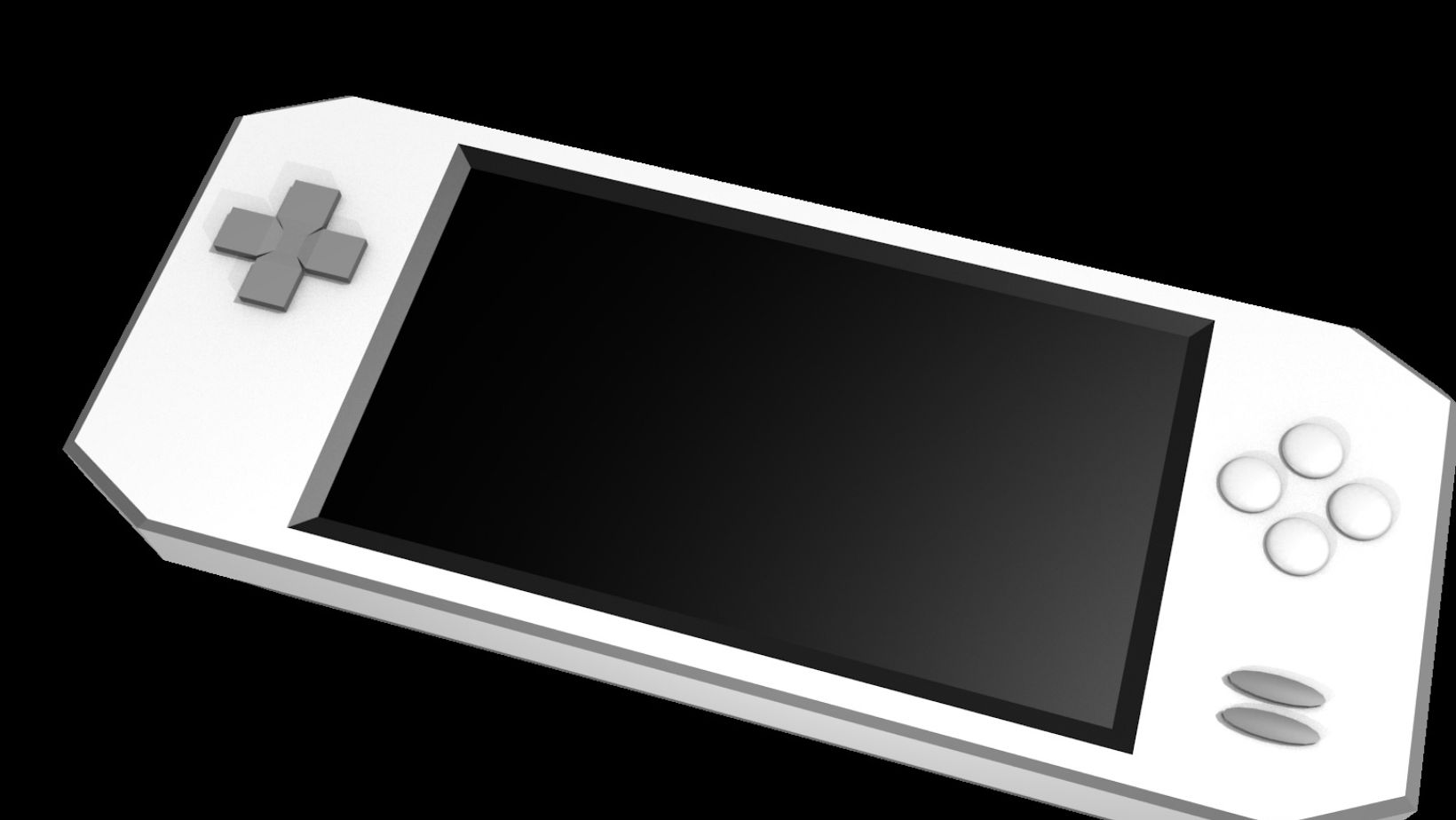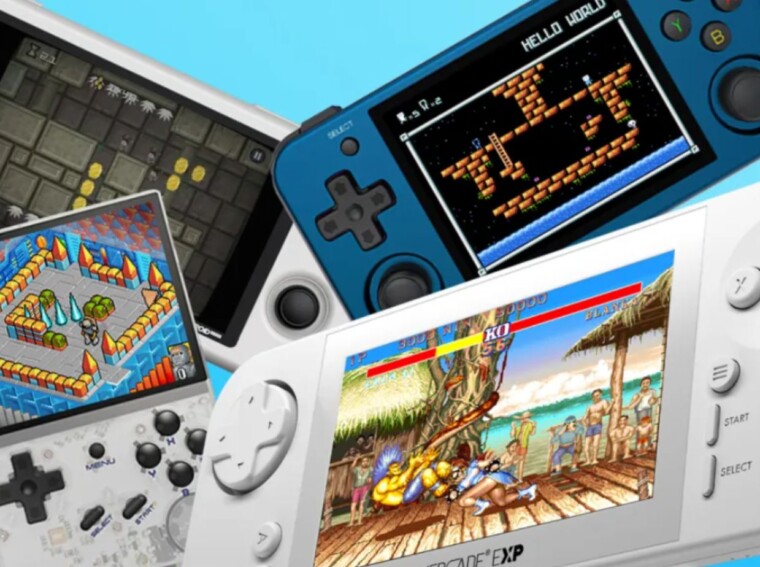Portable gaming in 2025 has entered a new era defined by AI-powered hardware, innovative chips, and a competitive lineup of handheld devices. AMD’s Ryzen AI Max chips bring GPU-level performance without the need for dedicated graphics, making AAA gaming possible on smaller form factors. Devices like the Steam Deck OLED, Nintendo Switch 2, ROG Ally, MSI Claw 8 AI+, and Lenovo Legion Go 2 occupy unique niches, each targeting different audiences.
AMD’s Ryzen AI Max Chips
AMD’s Ryzen AI Max (Strix Halo) APU is one of the most significant breakthroughs shaping portable gaming in 2025. Featuring up to 16 cores and 40 graphics cores, it rivals or even surpasses discrete GPUs like the RTX 4060 and 4070. GPD’s prototype “STX Halo handheld,” powered by the Ryzen AI Max+ 395, delivered a remarkable 3DMark TimeSpy overall score of 10,393, with a graphics score of 10,366 and CPU score of 10,552.
Inside the APU, the Radeon 8060S GPU based on RDNA 3.5 architecture provides more than double the GPU cores compared to Strix Point, achieving roughly three times the graphics performance of the HX 370’s integrated GPU. The GPD Win 5 handheld, powered by the Ryzen AI Max+ 395, positions itself as both a high-performance portable console and a mini-workstation. With a 7-inch 120 Hz touchscreen, dual-fan cooling, and a price tag around $2,000, it pushes boundaries for what handheld gaming can deliver.
Steam Deck OLED
The Steam Deck OLED remains one of the most balanced handhelds on the market. Starting at $549, it introduces a 7.4-inch HDR OLED display running at 90 Hz, delivering vibrant colors and sharper contrast. Equipped with Wi-Fi 6E, Bluetooth 5.3, and a battery roughly 25% larger than its predecessor, it is optimized for portability and reliability. Under the hood, an RDNA 2 GPU with 8 Compute Units provides between 1–1.6 TFLOPS of power, while SteamOS with Proton compatibility ensures broad support for PC games.
With its combination of ergonomic design, software flexibility, and competitive pricing, the Steam Deck OLED as the go-to budget-friendly portable gaming option in 2025.
Nintendo Switch 2
The Nintendo Switch 2 officially launched on June 5, 2025, priced at €469.99 in Europe, and achieved 5.82 million units sold by June 30, 2025. It runs on a custom Nvidia Tegra T239 “Drake” SoC with an octa-core ARM Cortex-A78C CPU clocked at 998 MHz docked and 1101 MHz handheld. Its 12-SM Ampere GPU delivers 1,536 CUDA cores, achieving 1.72 TFLOPS undocked and 3.09 TFLOPS docked.
Supporting 12 GB LPDDR5X RAM, 256 GB of storage, and a 7.9-inch 1080p LCD at 120 Hz with HDR10 and VRR, it blends console-level performance with portability. The dock allows up to 4K60 output via HDMI, while upgraded Joy-Con 2 controllers, a noise-canceling microphone, a front-facing camera, and broad third-party support from developers like Square Enix, Capcom, EA, Take-Two, and FromSoftware make it one of the most versatile handheld gaming devices available today.
ROG Ally X / Xbox Ally X
Launched on October 16, 2025, the ROG Xbox Ally X represents a partnership between Asus and Microsoft. It uses AMD’s Ryzen Z2 Extreme and integrates advanced AI tools, including highlight reel generation, aggregated game libraries, and OS-level enhancements for improved personalization.
The base Xbox Ally features 16 GB RAM and a 512 GB SSD, while the Ally X offers an upgrade to 24 GB RAM and 1 TB SSD. Both come with 7-inch 1080p touchscreens, run a stripped-down Windows environment optimized for gaming, and integrate seamlessly with Game Pass and Xbox libraries. The Xbox Ally prioritizes efficiency, ergonomics, and smoother experiences, reducing TDP from 30W to 20W and extending battery life with a 60 Whr battery compared to the original Ally’s 40 Whr capacity.
MSI Claw 8 AI+
MSI’s Claw 8 AI+ has redefined the company’s approach to handheld gaming. Powered by Intel’s Lunar Lake architecture, it delivers double the performance of its predecessor, along with up to a 30% performance boost through software and driver updates. Featuring an 8-inch 120 Hz VRR display and ergonomic refinements, it offers one of the best performance-per-watt ratios in the portable gaming market.
Inside, the device is equipped with an Intel Core Ultra 7 258V, 32 GB LPDDR5X-8533 RAM, 1 TB NVMe Gen 4 storage, and Intel Arc 140V graphics. Priced at around $1,000, it is one of the most powerful Windows-based handheld PCs available in 2025. This handheld incorporates AI drives efficiency, adaptive cooling, and smarter upscaling, while competition mirrors the innovation seen in best casino apps using AI for personalization. The result is more freedom, customization, and power than ever before.
Lenovo Legion Go / Legion Go 2
The original Lenovo Legion Go debuted with an 8.8-inch QHD+ display at 2560×1600 resolution and 144 Hz refresh rate, powered by AMD’s Ryzen Z1 APU. It offered 16 GB LPDDR5X-7500 RAM, 256 GB to 1 TB SSD options, hall-effect analog sticks, and a 49.2 Whr battery with a 79-blade fan cooling system. Its base price started at $599.99, offering competitive specs for its cost.
The Lenovo Legion Go 2 builds on this success, introducing an OLED display, a 50% larger 74 Whr battery, and upgraded hardware powered by AMD’s Ryzen Z2 Extreme. Offering up to 32 GB RAM, 2 TB of storage, and a rumored price between $1,049 and $1,099, the Go 2 cements its role as one of the most capable high-end handhelds expected in 2025.
Ecosystem Diversity and AI Roles
AI has become a central player in shaping handheld gaming. Devices leverage AI for adaptive cooling, real-time upscaling, and battery optimization, enhancing both performance and efficiency. The GPD Win 5’s dual-fan cooling and AMD’s AI Max chips show how integrated AI can boost GPU-level performance, while platforms like the ROG Ally X use AI to streamline highlight compilations and content curation.
Interestingly, this growing AI integration mirrors how best casino apps leverage machine learning for personalized recommendations and smarter optimization. In portable gaming, AI enables dynamic resolution adjustments, longer battery life, and seamless gameplay experiences tailored to each user.
Market Competition and Niches
The handheld gaming market in 2025 has evolved into a landscape of specialized niches. Budget-friendly options like the Steam Deck OLED at $549 appeal to mainstream gamers, while hybrids like the Nintendo Switch 2 at €469.99 target families and casual players, boasting 5.82 million units sold within a month of launch.
High-end users gravitate toward premium devices like the GPD Win 5 ($2,000), Lenovo Legion Go 2 ($1,099), and MSI Claw 8 AI+ (~$1,000), which cater to enthusiasts seeking uncompromised performance. Meanwhile, Xbox integration through the ROG Ally X creates a distinct niche for Game Pass subscribers, while Switch 2 remains the leader in cross-generational exclusivity.
Personalization, Freedom, and Power
Portable gaming in 2025 offers players unprecedented personalization and flexibility. From tuning performance profiles to accessing vast digital libraries, users can adapt their devices to fit their unique needs. AI-powered enhancements like smarter cooling, energy optimization, and upscaling ensure that players get the most out of their handhelds regardless of the form factor.

This freedom extends beyond hardware specifications: players can seamlessly transition between PC, console, and cloud ecosystems. Whether it is the Steam Deck OLED for Linux enthusiasts, the Switch 2 for Nintendo loyalists, or the ROG Ally X for Xbox integration, users now select devices that match their gaming style and environment.
The AI Power Revolution
Portable gaming in 2025 has transformed into a battleground powered by artificial intelligence. AMD’s Ryzen AI Max chips enable GPU-level power on handheld devices, while AI enhances resolution scaling, cooling efficiency, and adaptive performance management. Devices like the MSI Claw 8 AI+, ROG Ally X, and GPD Win 5 show just how far handheld gaming has evolved from simple portability to true desktop-level performance in compact forms.
With AI seamlessly blending into every aspect of gaming, 2025 marks the start of an era where handhelds deliver more speed, intelligence, and customization than ever before.

